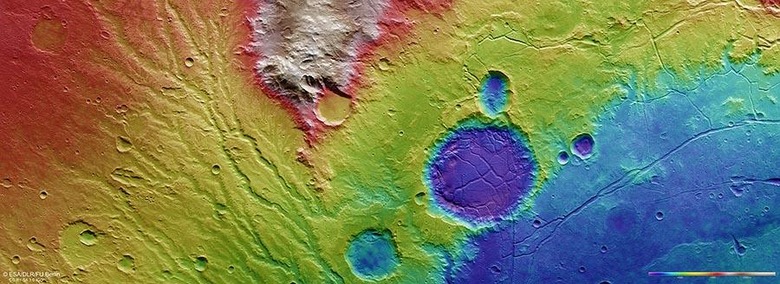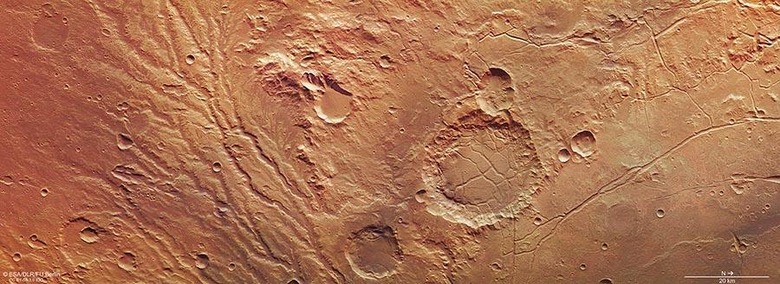Mars Express images reveal past Red Planet flooding
The European Space Agency has published images of a Mars region showing marks left by water in the Red Planet's distant past. According to the ESA, water has left "a variety" of marks on Mars, parts of which have been captured as part of the agency's Mars Express mission. A large impact basin is shown in the newly published images, as well as thin grooves that had been cut by flowing water long ago.
Mars Express is Europe's first mission involving Mars, with the spacecraft having taken a lander called Beagle 2 with it. Though that lander was not successful at landing, the orbiter continues to circle about, investigating the Red Planet and its pair of moons. In one of its most recent activities, the Mars Express mission has resulted in images captured of Mar's Arda Valles region, which lies on the planet's western rim.

Arda Valles is a dendritic drainage system near Ladon Valles and about 161 miles above the Holden Crater. According to the ESA, "vast volumes" of water had, at one time in history, flowed down from the southern highlands to form the Ladon Valles. That water ended up collecting in the Lardon Basin, shown in the new photos. Left of the crater lies many very starkly apparent dendritic drainage 'grooves' across the valley.
The water ultimately travelled down streams that at different points merged into tributaries, and, finally, flowed down into the impact crater. The ESA also points toward a large mound seen in the crater's foot, which may have been caused by sediment carried by the water streams. Other things that helped shape the pictured region include possible underground ice loss and water evaporation.
The researchers identified some of the deposits found in parts of this region — they include clay minerals, which further point toward water in Mars' past.
Mars has received considerable human attention over the past few years, with NASA also performing a considerable amount of research at the planet. NASA wants to get people to Mars, and it has recently been granted government funds to contribute toward that research. That reality is still a long while off, though, and in the meantime a number of experiments are being conducted to help usher in that future.
The ISS is experimenting with growing plants in space, for example, and NASA has solicited designs for possible future human habitats on the Red Planet.

SOURCE: European Space Agency
